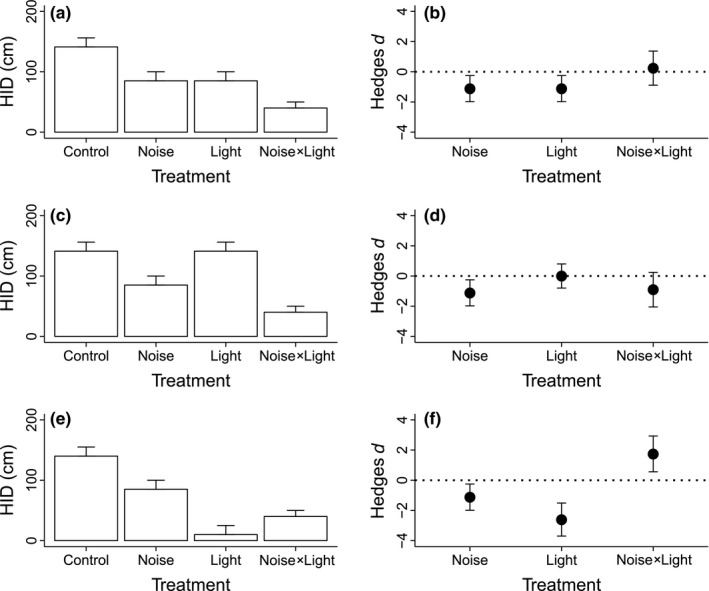Figure 5.

The effects of anthropogenic noise on predator risk assessment in Caribbean hermit crabs (Coenobita clypeatus), with the response measured as hiding initiation distance (HID—cm), the distance that a predator can approach before crabs hide in their shells. Raw data extracted from Chan et al. (2010, fig. 2e) for the “noise” and “noise × light” treatments in panel a, which represent exposure to boat noise alone, and boat noise simultaneously with flashing lights. We used their Figure 2b, and the reduction in HID between their control (“silence”) and “noise” treatment as an indication of the likely control value. In the original study, HID in response to flashing lights alone was not quantified. We explore how the noise × light interaction would be classified if: (a) noise and lights lead to comparable reductions in HID (an “additive” interaction—Figure 1, Table S1), (b) noise reduces HID in isolation but lights do not (also an additive interaction), and (c) both reduce HID, but light has significantly stronger effects than noise (an antagonistic interaction). In panels b,d,f, we present effect sizes (Hedges d, calculated as per Figures 2, 3, 4) for the individual and interactive effects of noise and light for each of these three scenarios
